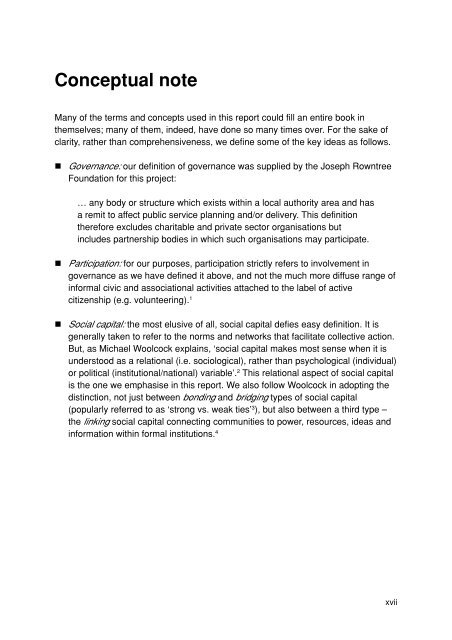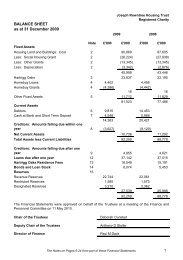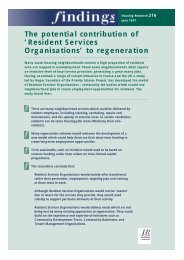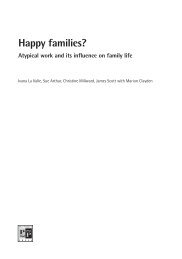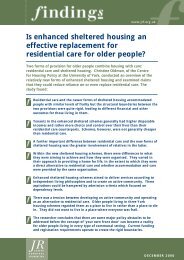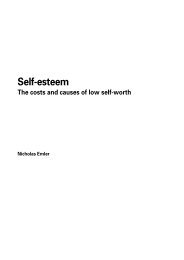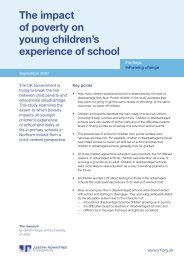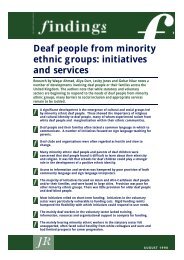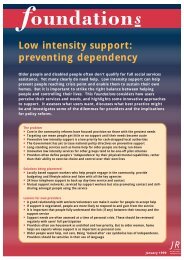Community participation - Joseph Rowntree Foundation
Community participation - Joseph Rowntree Foundation
Community participation - Joseph Rowntree Foundation
You also want an ePaper? Increase the reach of your titles
YUMPU automatically turns print PDFs into web optimized ePapers that Google loves.
Conceptual note<br />
Many of the terms and concepts used in this report could fill an entire book in<br />
themselves; many of them, indeed, have done so many times over. For the sake of<br />
clarity, rather than comprehensiveness, we define some of the key ideas as follows.<br />
<br />
Governance: our definition of governance was supplied by the <strong>Joseph</strong> <strong>Rowntree</strong><br />
<strong>Foundation</strong> for this project:<br />
… any body or structure which exists within a local authority area and has<br />
a remit to affect public service planning and/or delivery. This definition<br />
therefore excludes charitable and private sector organisations but<br />
includes partnership bodies in which such organisations may participate.<br />
<br />
<br />
Participation: for our purposes, <strong>participation</strong> strictly refers to involvement in<br />
governance as we have defined it above, and not the much more diffuse range of<br />
informal civic and associational activities attached to the label of active<br />
citizenship (e.g. volunteering). 1<br />
Social capital: the most elusive of all, social capital defies easy definition. It is<br />
generally taken to refer to the norms and networks that facilitate collective action.<br />
But, as Michael Woolcock explains, ‘social capital makes most sense when it is<br />
understood as a relational (i.e. sociological), rather than psychological (individual)<br />
or political (institutional/national) variable’. 2 This relational aspect of social capital<br />
is the one we emphasise in this report. We also follow Woolcock in adopting the<br />
distinction, not just between bonding and bridging types of social capital<br />
(popularly referred to as ‘strong vs. weak ties’ 3 ), but also between a third type –<br />
the linking social capital connecting communities to power, resources, ideas and<br />
information within formal institutions. 4<br />
xvii


